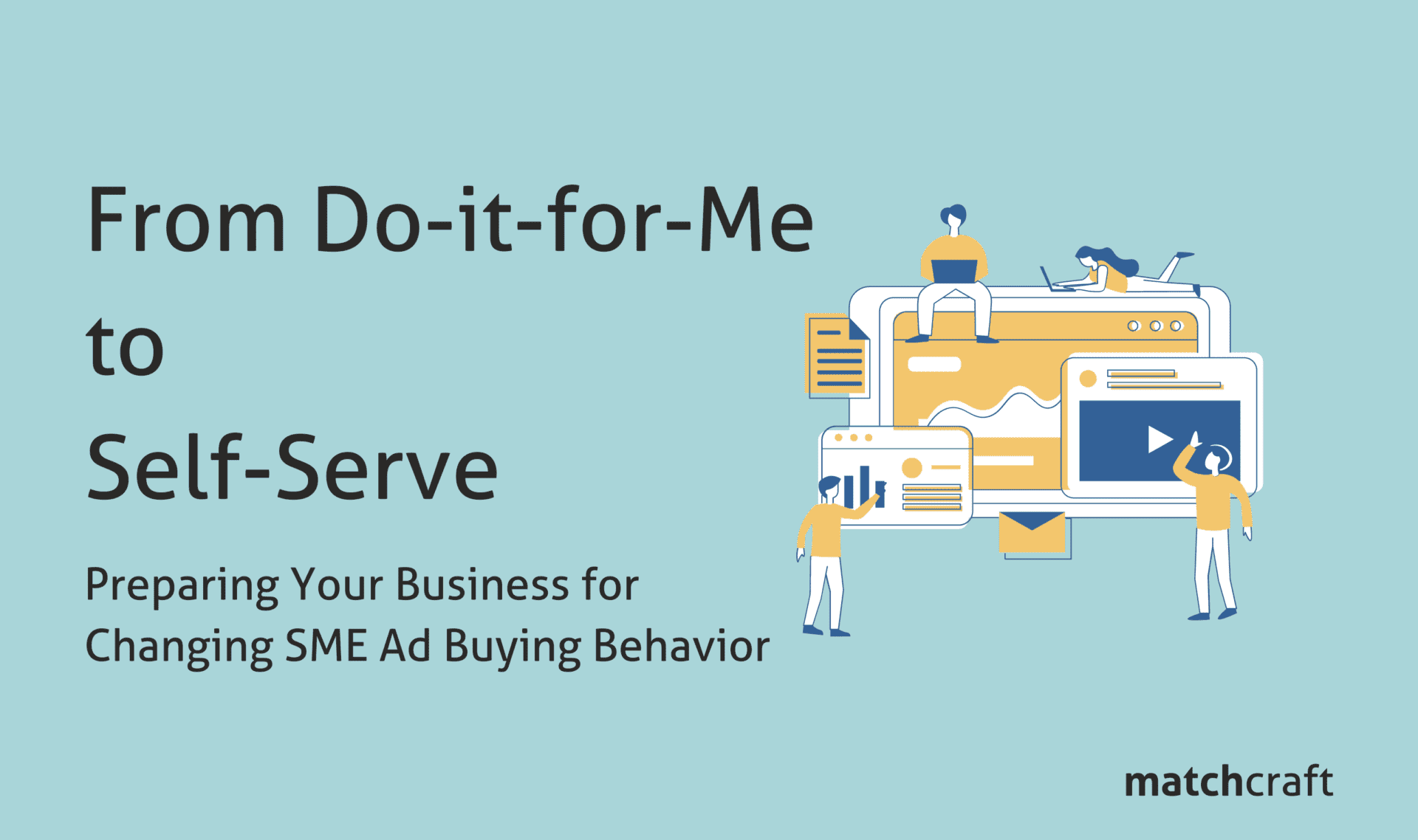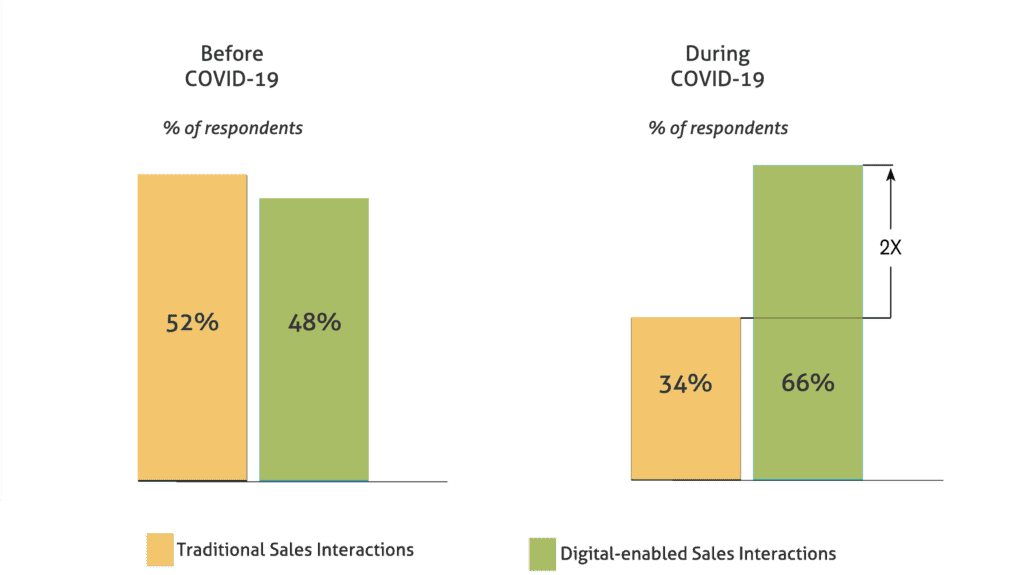Today’s digital-savvy consumers like being self-reliant – they prefer doing everything themselves from ordering groceries online to taking virtual yoga classes, hanging out with their friends over video chats, or touring new places via online tours. This DIY attitude has only been amplified due to the recent COVID-19 pandemic.
And now this DIY trend is propagating into the ad-tech space too because these digital natives expect that same ease of use and access from their ad technology providers. From the increasing number of digital-native business owners to the recent pandemic, all signs are pointing towards the emergence and importance of do-it-yourself or self-serve advertising technology.
Recently, our G.M. of EMEA, Jeff Chew talked in detail about this need for self-serve advertising technology, during a webinar hosted by our European partner SIINDA. Below you will find our take on why online advertising providers need to make this shift and how they can be successful at it.
Why Make This Shift?
For businesses that want to not just stay with the times but also be future-proof, offering self-serve technology is a must! According to The 2021 B2B Buying Disconnect study conducted by TrustRadius 87% of buyers want self-service options to make up a part or all of their buying journey.
And even though the need for self-serve ad platforms has been growing for a while, it is now that the market is truly ready for this service model shift. As per research by Salesforce, 69% of decision makers say self-service is an integral part of their service strategy and 89% of B2B decision makers say that self-service commerce will be a growth factor for their businesses in the years to come.
But the most important question is – why should you, as a reseller demand self-serve capabilities from your ad technology providers?
And the answer is because it supports scalability and growth which in turn will lead to greater financial success. Self-Serve technology will provide the ability to offer more to your local advertisers with fewer physical touchpoints.
And not to discount the fact that offering self-service options to your advertisers is an incredibly effective way fo showing that your value their time and want to make the overall buying experience as seamless as possible for all the involved stakeholders.
Why Now?
As we mentioned before, the market has been progressively moving towards the need for self-serve ad technology – our own clients have at times inquired about this shift for 5+ years now – but we weren’t sure the market was ready then.
But today as the market demographics change rapidly, self-serve an essential service model. The new demographic doesn’t want to rely on conversations with sales reps, instead, they want to do stuff on their own, at their own pace and when they have the time to – now or at 1:00 am in the night. What they need is a ready-to-go platform, any time of the day.
A 2018 Salesforce’s study found that 48% of business buyers preferred using online self-serve portals. And that trend has only seen an upward shift since then. A recent TrustRadius survey concluded that already 57% of buyers are making purchase decisions without ever speaking with a vendor representative.
And this need for self-serve is only expected to grow in the years to come. The Gartner Future of Sales 2025 report predicts that by 2025, 80% of B2B sales interactions between suppliers and buyers will occur via digital channels.
Another factor that has catapulted self-serve into the fast lane is the COVID-19 pandemic. People have become more self-reliant because in the last year people had to learn how to do things on their own – purely out of need. Also, the rise in remote working has accelerated the “consumerization” of B2B buying.
McKinsey’s recent study concluded that B2B companies now see digital interactions as 2x to 3x more important to their consumers than traditional sales interactions.
Source: McKinsey
Another pandemic-related factor is the cost-saving measures that many resellers and agencies have had to adopt, measures such as layoffs and overall budget cuts. With self-serve technology, these resource strapped companies can focus more on strategic tasks and leave the sales and ad operations to automation.
And the outlook for such a shift is sunny as 70% of B2B decision makers now say that they are open to making new, fully self-serve or remote purchases in excess of $50,000 with 27% open to spending over $500,000.
Barriers to Adoption
As is the case with any new product/service, there are some barriers to entry for self-serve ad tech providers:
- Time & Resource Constraints – Building an intuitive self-service platform needs time, testing and careful improvements with ongoing feedback. And given that a self-serve platform is meant to accessible 24*7, it is also important to back the technology with round-the-clock customer service. All these above requirements can end up needing massive time and resource commitments from tech providers, resellers and agencies.
- Costs Involved – It may prove expensive to switch from a technology/service that a customer is already using to a self-serve platform – costs such as data migration, training. redeployment of assets, etc.
- Prioritization – For businesses just recovering from the effects of the lockdowns, making investments in new/upgraded ad technology may not be on the radar.
- Operational Readiness – On the technology provider’s end, designing and launching a self-serve platform requires a shift in the way internal resources are being used & deployed tasks such as product management & customer service. And on the technology adopter’s end, there may be a need for several operational changes such as getting the team on board with the concept of a self-serve serve ad platform, product on-boarding, restructuring some job functions, etc. Thereby, causing delays in the adoption of self-serve platforms.
- Product specifications – Technology providers may have trouble deciding the core feature set for their self-serve platforms and Technology adopters may worry about a self-serve platform giving them the necessary tools for continued scalability.
Barriers to Adoption
But where there’s risk, there are sure to be rewards. An online self-service channel is a great way to give ad technology buyers the opportunity to make purchase decisions at their own pace.
- Access to Fast-Growing DIY Market – The global self-service technology market size is growing at an exponential rate. In 2019, it was valued at USD 7.12 billion and is expected to grow at a compound annual growth rate (CAGR) of 22.1% from 2020 to 2027. One of the key reasons for this expected increment in market share is the reduction in operational costs that self-serve platforms help enable. Along with offering resellers and agencies a competitive advantage, thereby reducing their advertise churn.
- Lower Cost of Acquisition – Given that the self-serve buyer journey, and subsequent platform interactions, include very few human touchpoints, it’s a great way for resellers and agencies to reduce sales & customer service costs. Thereby offering resellers and agencies the ability to scale and increase their market share without increasing internal costs.
- Lower Cost of Service – Offering self-serve technology can prove to be a boon for resellers and agencies working with low budget advertisers as self-service ad platforms reduce the amount of time required to manage customer accounts without comprising the quality of service or technology being provided. According to the Harvard Business Review, self-service makes it possible to help large numbers of customers at a significantly lower cost: “The cost of a do-it-yourself transaction is measured in pennies, while the average cost of a live service interaction is more than $7 for a B2C company and more than $13 for a B2B company.”
- 24*7 Sales Channel & Increase Sales Leads – Offering self-service options is great way to provide prospective advertisers with platform information even before the sales process begins – it can serve as a 24*7 sales channel. Which in turn can lead to an increase in a sales leads.
Implementation Best Practices
- Get in the Right Headspace – The goal of a self-service model should be to decrease the amount of time between a buyer’s intent and actions. And to do that it is important to provide the best possible DIY experience, during the purchase process and after – provide clear product and pricing details along with a seamless checkout. B2B self-serve should be just as intuitive as its B2C counterparts.
- Self-Service is a Service Model – When designing a self-service model, think in terms of customer lifetime value and long-term loyalty. Post sale, take on a more consultative role for your self-serve customers. Anticipate their needs & provide them with plenty of informational tools to offer a clear path to success.
- Monitor Customer Success – Remember that offering self-service is more than just automating platform workflows. To maintain continued customer happiness, it is important to keep channels to sales and customer service reps open and readily available.
- Don’t Overlook Retention – A well-planned and implemented self-serve portal can reduce churn by constantly addressing customer concerns and thus, increasing overall satisfaction. Be sure to offer a comprehensive knowledge base to your self-serve customers. Also provide 24*7 customer support. And when it’s not possible to have a customer service rep available, supplement platform support with automation tools such as chatbots that have pre-stored answers to the most frequently asked questions.
Many of our clients across the world have already found success offering self-service ad technology, to their local advertisers, by using our adVantage platform’s API suite.
It is safe to say that Self-Serve technology is not just a good-to-offer solution anymore – it is the need of the hour for advertisers, resellers and technology providers.
To listen to the entire webinar, follow this link: https://register.gotowebinar.com/recording/5020383700590789639.

